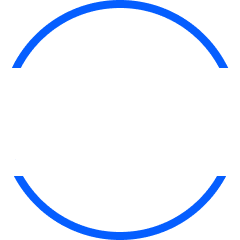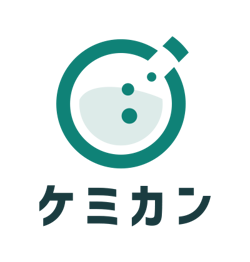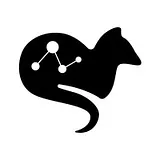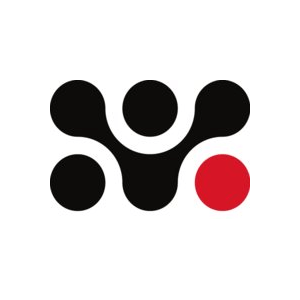Updated December 10, 2024
Technical Communication: English Skills for Engineers
Learning English is a difficult task, learning technical English is even harder! In this article, we will work through some common phrases you can expect to hear in your role as a software engineer. Having knowledge of these phrases will lead to better communication between you and your coworkers.
Let’s get started!
Phrase: I don’t have the capacity for that right now.
Explanation: This phrase means is another way of saying “I don’t have the time right now”. It means that the person is too busy to take on any more work at the moment. You will often hear this phrase when the manager asks someone if they can take on a new task. You may also hear it if you ask your coworker for help.
Phrase: I’m totally blocked on that right now.
Explanation: This is a phrase unique to the business and engineering world. What does someone mean when they say they are blocked? It means they are not able to continue working on a particular task because of a certain issue that is “blocking” them. For example, If you had to update your code on GitHub, but there was currently a GitHub outage, you would be blocked, unable to take further action. It’s not just issues that can block tasks from being completed. With large projects, you will often rely on the work of others in order to get your own work done. If a coworker does not finish their task in time, it could be a blocker for you.
Phrase: We’re having a whip-round for John’s birthday.
Explanation: Why is my coworker talking about a whip? A whip-round is the practice of gathering a small amount of money from each person in order to purchase gifts for special occasion. It usually occurs for birthdays and retirement parties. If you are asked to partake in a whip-round, the best response is usually to ask how much is each person putting in, and ask do you need to sign the birthday or retirement card. There will be a party that your money helped fund where the gifts will be given to the lucky person, and you can enjoy the food and beverages on offer.
Phrase: Mary is OOO today.
Explanation: It is common to see this phrase used in the workplace. OOO stands for out-of-office. When an employee is OOO, or out-of-office, it doesn’t always mean they are on vacation. They can be OOO for many different reasons. This could be a medical appointment, a visit to the dentist, or another reason altogether! It is polite to ask about a coworker's vacation when they mention they have booked some vacation time at work. However, it is wise not to ask about why your coworker is OOO if they have not brought up the subject themselves. It could be a private and sensitive matter that is none of your concern.
If you have any time booked off from work your manager or HR may ask you to set an OOO reminder. This is an automated response that gets sent from your email address each time you receive a new email into your inbox. This automatic response usually contains a short message saying you are currently OOO, and when you will return. It also provides the contact details of your manager, just in case the issue can not wait until you get back to the office.
Phrase: Have you booked any PTO yet?
Explanation: The use of this acronym is commonplace in the modern work environment. PTO stands for paid time off. The main difference between paid time off and vacation time is that PTO can also include sick days, personal days and any other time you might need to book off. That is why many companies no longer refer to their annual leave as PTO instead of vacation days, it is a more accurate definition.
Phrase: Will it scale?
Explanation: You will often hear this phrase in software engineering, and it asks whether the software is “scalable” or not. When something is scalable, that means it is built or configured in a way that enables it to still function correctly even when there is an increase in traffic or usage. In other words, the application or infrastructure is designed to anticipate increased demand and support it easily, as opposed to software engineers figuring out a way to support the increase reactively.
Phrase: The code required for that website is trivial.
Explanation: The word “trivial” has a specific meaning in a software engineering context. It means that the work will be quite simple to implement. If a task is described as trivial, it means it will be easy for you to accomplish and will not require a lot of time and effort.
Phrase: Have you done TDD in the past?
Explanation: TDD stands for test-driven development. Test-driven development is the practice of writing unit tests first, then writing your code in order to pass those predefined unit tests. It flips the script and makes developers think about how their code will be used. TDD is a desirable skill, with many employers looking to hire those that have experience with the practice. The ability to discuss TDD with potential employers and your current coworkers will make you look impressive in the workplace.
Phrase: Try and have that task completed by EOD.
Explanation: You may receive an email or message containing this acronym. EOD stands for end-of-day. Applying this to the phrase above, this means your coworker would like you to have that task completed by the end of the day.
Phrase: Try and have that task completed by COB.
Explanation: This is similar to the previous phrase. The acronym COB stands for close-of-business. Applying this to the phrase above, this means your coworker would like you to have that task completed by the close of business. If your business or office closes at 6:00 p.m, it would need to be completed by 6:00 p.m.
Phrase: Does this item need UAT?
Explanation: You will probably see the acronym UAT when working as a software engineer. It stands for user acceptance testing, but what does this mean exactly? User acceptance testing is the last phase of the software testing process. During UAT, actual software users test the software to make sure it can actually perform the tasks it was performed to do, according to the requirements. UAT is one of the final and most critical stages that must occur before newly developed software is rolled out to the market.
Phrase: What are the acceptance criteria for this piece of work?
Explanation: The use of acceptance criteria is common in software development. In your day-to-day work you will probably hear this phrase a lot. Acceptance criteria are a formalized list of requirements created to ensure that all user stories are completed and all scenarios are taken into account. Put simply, acceptance criteria are the conditions under which a user story is fulfilled. It is what your new software should do once it is released.
Phrase: What environment is causing issues?
Explanation: No, this phrase isn’t talking about climate change or other environmental issues! In a software engineering context, an environment is a computer system or set of systems in which a computer program or software component is deployed and executed. The different environments you can expect to encounter are local (your machine), test (where changes are deployed and tested), and production (what the users and customers use).
Phrase: Is there docs available for that software?
Explanation: Whoever asked this question is not looking for a doctor, but rather documentation! Usually when software is created, documentation is also made created. Documenation is designed to explain the desired use of the software and how it works. The word “docs” is short for documentation.
Phrase: This is proprietary software.
Explanation: The word proprietary may trip you up here, as it is not a common word outside of software engineering. Proprietary software is any software that is copyrighted by its publisher, vendor, or developer. Proprietary software remains the property of its owner or creator, and is the users of the software must accept the terms and conditions set out by the owner in order to use the software. Proprietary software is also known as commercial software or closed-source software.
Phrase: We have the license for that software.
Explanation: You may be wondering, why do I need a license for software? A software license is a legal instrument governing the use or redistribution of software. Under United States copyright law, all software is copyright protected, in both source code and object code forms. Even open-source software has different licenses.
Phrase: Has that code been QA tested?
Explanation: When working as a software engineer you can expect to see the acronym QA. This refers to quality assurance. Quality assurance is another way of saying software testing. Software testing takes place to ensure your new code works correctly, and users will not encounter any issues or bugs. This phrase is asking if a specific piece of code has been tested by the QA team.
Phrase: What source control software have you used in the past?
Explanation: You may face this question in a technical interview, so being able to answer it confidently is very important. Source control refers to tracking and managing changes to code. This ensures that developers are always working on the right version of source code. Every development team needs a good way to manage changes and version code in their codebases. That's why they use source control tools. To answer this question, think of the tools that were used to track any changes made to the code base.
Phrase: Can you share your screen please?
Explanation: As remote work grows in popularity, you can expect to hear this phrase more and more. It is the act of displaying what is on your screen using video calling software. For example, Microsoft Teams, Slack and Zoom all have the option to display your screen to everyone you are in a call with. This functionality is known as sharing the screen, and you can expect others to ask you to share your screen when in a meeting. This allows for better cooperation and teamwork, especially for difficult problems. Trying to solve an issue when you are all looking at the same screen is far easier than just talking, as there is a visual aid to guide you through the process.
Phrase: Would you like to do some pair programming?
Explanation: Pair programming essentially means that two people write code together on one machine. It is a very collaborative way of working and involves a lot of communication. While a pair of developers work on a task together, they do not only write code, they also plan and discuss their work. They clarify ideas on the way, discuss approaches and come to better solutions.
Phrase: Do you have any cloud experience?
Explanation: Cloud, isn’t that what floats in the sky?! When discussing software engineering, the cloud refers to cloud computing. Cloud computing is the practice of using a network of remote servers hosted on the internet to store, manage, and process data, rather than a local server or a personal computer.
Phrase: My work needs a code review.
Explanation: Code review is a systematic examination of software source code, intended to find bugs and to estimate the code quality. If you hear this phrase, it means your coworker wants you to review their code, and approve it to be merged with the existing codebase. It is a common practice in most development companies.
Phrase: We use open-source software.
Explanation: Open-source software is any computer software that's distributed with its source code available for modification. That means it usually includes a license for software engineers to change the software in any way they choose. They can fix bugs, improve functions, or adapt the software to suit their own needs.
Phrase: Try to get that done by the end of the sprint!
Explanation: Sprint? But I am not running?! The use of the word “sprint” may confuse you at first. When dealing with software engineering, a sprint commonly refers to a two-week period of work, where the software development team tries to complete as much work as possible. Sprints are another common feature of agile methodology.
Phrase: That is legacy code.
Explanation: Legacy basically means old. It is code that was created a long time ago and is difficult to maintain and add to. Legacy code can also refer to unsupported operating systems, hardware, and formats. In most cases, legacy code is converted to a modern software language and platform.
Phrase: Can you check out that pull request?
Explanation: This refers to a pull request for a version control system like GitHub or GitLab. A pull request occurs when your co-worker (usually another software engineer on your team) is trying to merge their changes to the existing codebase. They are asking you to review their work.
Phrase: Have you pushed your code yet?
Explanation: The use of the verb, to push, may cause you confusion. How do I push code? This refers to the functionality of version control software like GitHub and GitLab. You will need to push or merge, your code into the existing code base so that your other team members can also see the changes you have made.
Phrase: Mary is on maternity leave.
Explanation: This is a phrase you are unlikely to hear until you enter the workplace. When a woman has a child, most workplaces offer a period of time away from work. This may be paid or unpaid depending on the cultural and societal norms of the country you are working in. It is common for companies to hire contractors to handle the work that is left by those who go on maternity leave.
Phrase: John is on paternity leave.
Explanation: This phrase is similar to the last example. When a woman leaves the workplace to take care of a new child it is called maternity leave. When a man leaves the workplace to look after their baby it is called paternity leave. Usually the amount of paternity leave that fathers are able to take is much shorter than the equivalent for maternity leave. Some companies offer no paternity leave, some offer a short period such as two weeks off. The company is unlikely to hire a contractor to cover the role and responsibilities of an employee that goes on paternity leave, as they will likely return to the office at a much sooner date.
Get confident with technical English
There you have it! Some of the most common phrases and concepts you will encounter when working as a software engineer. Do not let technical English intimidate you. Feel free to bookmark this page and use it as a reference tool. Hopefully at this stage you feel more confident and more prepared to engage in technical conversations with others, have fun!
Get Job Alerts
Sign up for our newsletter to get hand-picked tech jobs in Japan – straight to your inbox.








